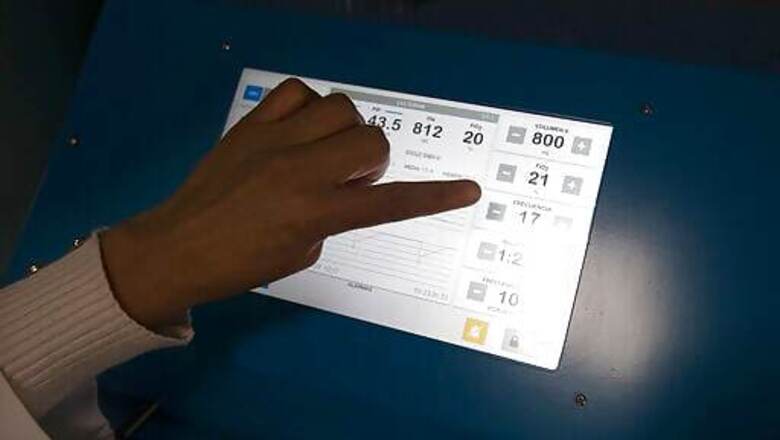
views
MEXICO CITY A Mexican-made, Mexican-designed ventilator, meant to overcome an international shortage of the machines and at a lower price, is already in service at hospitals here.
A rugged device that operates with bottled oxygen, the ventilator known by the unwieldy name of VSZ-20-2 has its own back-up power source. It was designed by experts at the Salvador Zubirn National Institute of Medical Sciences and Nutrition and is made by a consortium of about 15 companies.
Dr. Guillermo Domnguez Cherit, the institute’s head of critical care, said Monday the machine has already helped treat nine patients. Cherit said it was easy to transport, clean and set up, saying, This is a ventilator that was designed especially for the pandemic.
Mexico had previously scrambled to import the machines, but now Foreign Relations Secretary Marcelo Ebrard said that Mexico will no longer need to continue importing ventilators.”
Ebrard said about 800 people in Mexico designers, doctors, technicians and workers participated in the project. About 185 of the machines have been produced so far and are making their way into hospitals. And they cost about $12,000 far below the price of many commercially produced models on the international market.
Officials said Mexico can now produce as many as 500 machines per week, if needed.
The project is one of many around the world that were launched as the COVID-19 pandemic spread and authorities became alarmed about a shortage of ventilators and their high costs needed to treat patients.
Fanny Alvarado Chvez was the chief of the institute’s Department of Biomedical Engineering when the call went out in early March to find ventilators quickly because we did not have enough to face this pandemic.
We started to look for ventilators in Mexico and the international level, but there weren’t any, and what few there were, were very expensive, Alvarado Chavez said. So she and her colleagues dug out a 30-year-old experimental machine that had never been mass produced, to see what worked and what needed to be brought up to present-day standards.
It had to be simple to use in environments with little infrastructure, and so it was designed to filter its own air rather than relying on hospital wall outlets that might not be available. That means it can be used in the emergency expansion hospitals that the government has set up at convention centers, hospital parking lots and even at Mexico City’s Formula 1 track.
The needs were urgent and it would have taken two years to ramp up production themselves. So the group got help from the Mexican government, which hooked them up with manufacturers in the northern city of Monterrey that could produce the parts.
Biomedical Engineer Juan Jess Meja Fernndez said that the ventilator’s piston-driven design and mechanical valves also help to save scarce oxygen and require fewer foreign-made parts.
It has been proven that this is a totally robust machine, Meja Fernndez said, noting that one test ventilator has already been working 50 days without interruption.
Developing this required a collaboration among engineers, companies, doctors, veterinarians (because animals were used in testing. … It was so many people that were needed to get this done,” he said.
Ramses Galaz Mndez, the director of the GCE Biomedica company, which helped in the development and production process, said the big challenge was how to bring together 15 companies, 15 institutions, in a joint collaboration on design and development in just 10 weeks.”
To develop a machine typically takes four, five, six years, he said. “We were racing under the deadline because we had to do it in just 10 weeks.
Disclaimer: This post has been auto-published from an agency feed without any modifications to the text and has not been reviewed by an editor




















Comments
0 comment